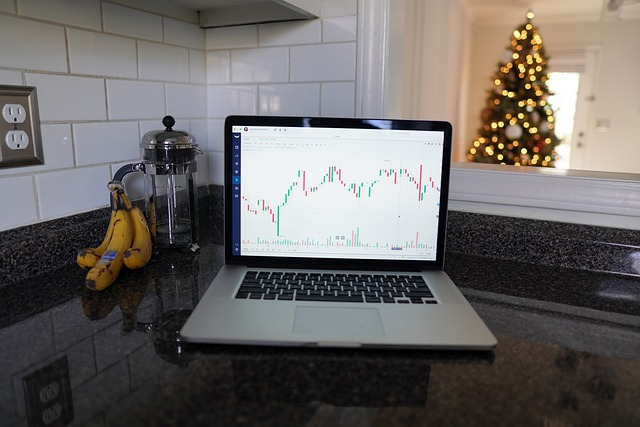In the ever-evolving landscape of financial trading, trading automation has emerged as a transformative force. This technology revolutionizes how traders execute their strategies by automating processes that were once manual and time-consuming. In this guide, we will explore the fundamentals of trading automation, its benefits, and how it can enhance your trading strategies for better performance and efficiency.
Understanding Trading Automation
Trading automation refers to the use of technology to automate the trading process. This can include everything from executing trades to managing portfolios and analyzing market data. The primary objective is to reduce human intervention and increase efficiency, accuracy, and speed.
Algorithmic Trading is a core component of trading automation. It involves using algorithms or computer programs to execute trades based on predefined criteria. These algorithms can analyze market conditions, identify trading opportunities, and execute orders faster than a human trader could. By removing emotional biases and relying on data-driven decisions, algorithmic trading can lead to more consistent and objective trading outcomes.
Types of Trading Automation
Execution Algorithms: These algorithms focus on the execution of trades. They aim to minimize the impact on the market by splitting large orders into smaller ones and executing them at optimal times. Examples include VWAP (Volume Weighted Average Price) and TWAP (Time Weighted Average Price) algorithms.
Arbitrage Algorithms: These algorithms exploit price differences between different markets or instruments. By buying low in one market and selling high in another, traders can profit from the discrepancy. Statistical Arbitrage and Index Arbitrage are common strategies in this category.
Market Making Algorithms: Market makers provide liquidity by continuously quoting buy and sell prices. Market-making algorithms help in maintaining the bid-ask spread and ensure there is always a market for buying and selling. These algorithms can adjust prices based on market conditions and demand.
Trend Following Algorithms: These algorithms identify and follow market trends. They use technical indicators and historical data to determine the direction of the market and execute trades that align with the prevailing trend. Moving Averages and Momentum Indicators are often used in these strategies.
Sentiment Analysis Algorithms: By analyzing news, social media, and other sources of market sentiment, these algorithms gauge investor sentiment and make trading decisions based on the overall market mood. Natural Language Processing (NLP) is a key technology used in sentiment analysis.
Benefits of Trading Automation
Speed and Efficiency: Automated trading systems can execute trades in milliseconds, far faster than any human trader. This speed allows traders to take advantage of market opportunities and react to changes quickly.
Consistency and Objectivity: Automated systems follow predefined rules without the influence of emotions. This objectivity helps in maintaining consistent trading strategies and reducing the risk of emotional decision-making.
Backtesting and Optimization: Automated trading systems can be tested against historical data to evaluate their performance. This backtesting allows traders to refine and optimize their strategies before deploying them in live trading.
24/7 Trading: Automated systems can operate around the clock, allowing traders to take advantage of global markets and trading opportunities without being tied to specific trading hours.
Reduced Human Error: Automation minimizes the risk of human error, such as entering incorrect trade orders or missing trading opportunities. This accuracy enhances the reliability of trading strategies.
Implementing Trading Automation
Choosing the Right Platform: Selecting a reliable trading platform is crucial for effective automation. Look for platforms that offer robust algorithmic trading capabilities, real-time data, and support for various asset classes.
Developing Trading Strategies: Before automating your trading, you need well-defined strategies. Consider using technical analysis, fundamental analysis, or a combination of both to develop strategies that align with your trading goals.
Backtesting and Optimization: Test your strategies using historical data to assess their performance. Adjust and optimize your algorithms based on the results to improve their effectiveness.
Monitoring and Maintenance: Even with automation, continuous monitoring is essential. Ensure that your systems are functioning correctly and make adjustments as needed based on market conditions and performance.
Risk Management: Incorporate risk management techniques to protect your capital. Set stop-loss orders, monitor risk exposure, and use diversification to manage risk effectively.
Challenges and Considerations
While trading automation offers numerous benefits, it also comes with challenges. Understanding these challenges can help you prepare and mitigate potential issues:
System Reliability: Automated systems are dependent on technology and internet connectivity. Ensure that your systems are reliable and have contingency plans in place for technical issues.
Market Conditions: Automated systems may struggle in highly volatile or unpredictable markets. Regularly review and adjust your strategies to account for changing market conditions.
Over-Reliance on Technology: Relying solely on automation can lead to a lack of understanding of market dynamics. Maintain a balance between automation and manual analysis to stay informed about market trends.
Compliance and Regulation: Ensure that your automated trading practices comply with regulatory requirements. Stay informed about changes in regulations that may impact your trading activities.
Future of Trading Automation
The future of trading automation is promising, with advancements in technology and artificial intelligence driving innovation. Emerging trends such as machine learning, big data analytics, and blockchain are expected to further enhance trading automation capabilities.
Machine learning algorithms will enable more sophisticated analysis and predictive capabilities, allowing traders to anticipate market movements with greater accuracy. Big data analytics will provide deeper insights into market trends and patterns, while blockchain technology may introduce new ways to execute and verify trades.
As technology continues to evolve, trading automation will play an increasingly central role in shaping the future of financial markets. Embracing these advancements and staying ahead of technological trends will be key to achieving success in the evolving trading landscape.

